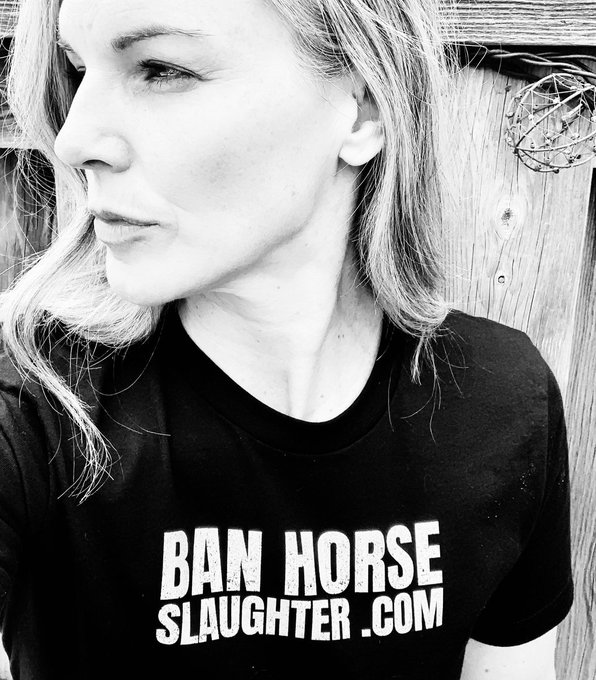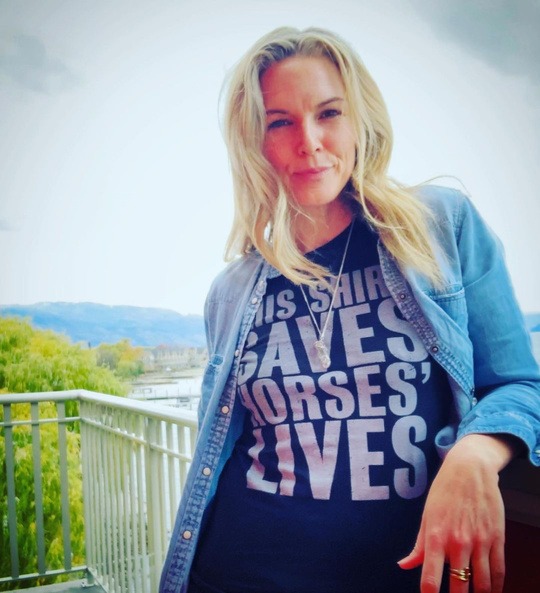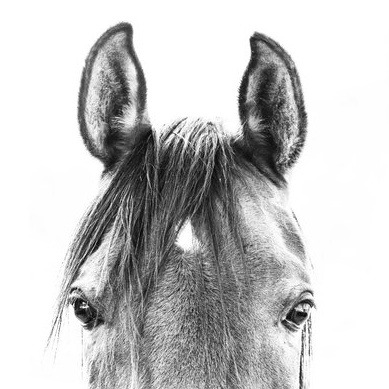A 23rd horse fatality has occurred at Santa Anita since Dec. 26 when Arms Runner fell on the dirt crossover portion of the hillside turf course Sunday and was later euthanized. La Sardane, who was behind Arms Runner, couldn’t avoid the fallen horse, tripped and went to the ground, but got right back up.
The death was confirmed by Dr. Rick Arthur, equine medical director of the California Horse Racing Board.
The jockeys Martin Pedroza, aboard Arms Runner, and Ruben Fuentes were believed to have sustained no more than bumps and bruises although they were taken off their remaining mounts.
The accident occurred in the feature race of the day, the Grade 3 $100,000 San Simeon Stakes, a 6 1/2 furlong turf race that starts at the top of a hillside and has a crossover point on dirt. The spill happened just as the horses were about to re-enter the turf portion of the course. It appeared that Arms Runner injured his right front leg.

Scott Martelle of the Los Angeles Times writes:
I’m a horse racing fan, but I won’t be at Santa Anita on Saturday
A few months ago, I marked Saturday down on my calendar as Santa Anita Derby day to ensure I wouldn’t miss one of the top annual races at the famed horse track in Arcadia. It’s a big deal in horse racing — the winner of the $1-million purse also gets a near-automatic entry in next month’s Kentucky Derby.
I was in the stands last spring when Justify won to qualify for the Kentucky Derby, which he also won en route to becoming only the 13th horse to win the Triple Crown, horse racing’s holy grail. (The first horse to win the Kentucky Derby, the Preakness Stakes and the Belmont Stakes was Sir Barton in 1919).
So the Santa Anita Derby is a big deal. But I’m not going to the track Saturday after all. There have been too many dead horses, and not enough answers.
How many dead horses? Over the last three months 23 horses have died in races or training at the park. By contrast, 37 horses died over seven months in 2017-18.
The current rate is a troubling spike in a sport that already contributes to the deaths of some 500 horses a yearnationwide, out of tens of thousands of horses that compete in nearly 40,000 races a year.
The tough question is deciding what the threshold should be for acceptable levels of hurt horses, whose physiology means that a broken leg can be a fatal injury.
I’m not sure what that answer is, and in some ways it’s a personal call. And while I won’t be at the track this weekend, thousands of my fellow horse racing enthusiasts will be.
There have been too many dead horses, and not enough answers.
The most troubling aspect is that Santa Anita track officials have decided to continue racing despite not knowing why so many horses are suffering such debilitating injuries.
To their credit, track officials have paused racing three times to conduct tests and studies in hopes of determining whether a winter of heavy rains has affected the track or whether there are other identifiable causes. Yet they have found no definitive answers, and each time racing resumed more horses died, the most recent on Sunday as the horse fell mid-race where a dirt track crosses the downhill turf course.
It’s a tough call. Horse racing is entertainment for those of us who like to sit in the stands, bet and cheer on the horses and jockeys, soak in the singular beauty of the San Gabriel Mountains rising north of the track, and enjoy a day that at once feels disconnected from daily life in Los Angeles, yet is also quintessentially Los Angeles. The current track has been there since 1934, and to step onto the grounds is to step back in time.
Yet Santa Anita is also a business. Hundreds of jobs intersect with the track, including grounds employees, betting tellers, the stable hands and trainers. Shutting down causes significant economic pain for those who depend on the track for a living.
But the dead horses
As a culture, we tend to like our sports with an edge of toughness. Football, hockey, basketball, even baseball are games that involve sometimes violent collisions, often leading to painful career-derailing injuries and, on rare occasions, death. We’re still trying to grapple with the issue of head traumas suffered by young athletes that develop into progressive brain disease later in life.
In hockey, fights are part of the game, and acts that would lead to jail time if committed on a sidewalk get players a two-minute timeout. Not to mention boxing and mixed martial arts, whose bouts would be felonies were it not for sanctioning agencies.
But those who engage in such sports do so willingly. Thoroughbred horses, on the other hand, have no choice in the matter (much like the animals that we make our pets). They are bred for one main purpose — to race. And when they can’t, or when they are too slow to be competitive, tens of thousands of them are packed off to slaughterhouses.
But is that any crueler than raising cows and chickens for meat? Again, how distressing that is a personal view, so long as the animals are cared for humanely while they are alive.
And my personal view is that too much is unanswered about the horse deaths at Santa Anita for me to sit in the stands Saturday, place my bets and hope to see in person another top contender for the Kentucky Derby and, as a long shot, the Triple Crown.
Horse racing may be the sport of kings, but it survives on the patronage of everyday fans. I hit the track four or five times a year, and at the moment, my patronage is wavering.

T-SHIRTS IN SUPPORT OF HORSE RESCUE FUND
LIMITED TIME OFFER FREE SHIPPING CANADA & USA


CANADA SLAUGHTERS HORSES FOR HUMAN CONSUMPTION
It may be hard for some to believe that thousands of horses, including pets, are routinely slaughtered in Canada, for human consumption.
Some of the meat is consumed in Canada and much of it is shipped to the European Union and other markets, including Japan.
The barbaric slaughter of horses is currently not legal in the United States, BUT horses, including pets and ex-racehorses, from the United States are shipped to Canada and to Mexico to be slaughtered.
In addition Canada allows for the transportation of live horses to Japan, to be slaughtered for human consumption, and unfortunately the transportation of horses destined for slaughter within Canada, and by air, is far from humane.
CONSERVATIVES IN FAVOUR OF HORSE SLAUGHTER
SOCIAL MEDIA WRONGLY BLAMING PM TRUDEAU Recently on social media, we’ve noticed some advocates blaming Prime Minister Trudeau for the ongoing export of horses from Canada to Japan and other markets for the purpose of slaughter. We are thankful that Prime Minister...
JESSICA SCOTT REID
THE WINNIPEG FREE PRESS: OPINON Recently on social media, we’ve noticed some advocates blaming Prime Minister Trudeau for the ongoing export of horses from Canada to Japan and other markets for the purpose of slaughter. We are thankful that Prime Minister Trudeau and...






